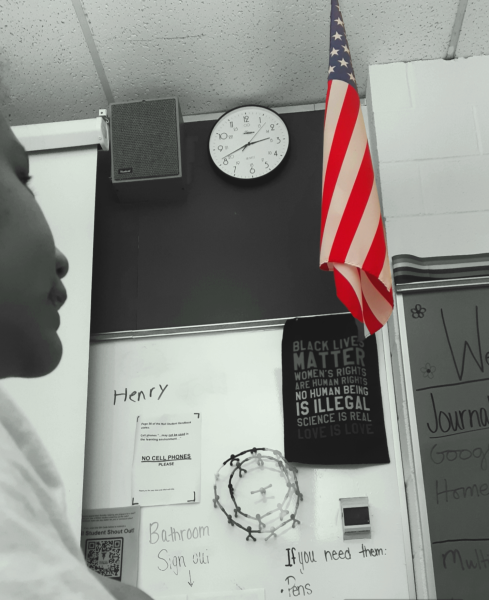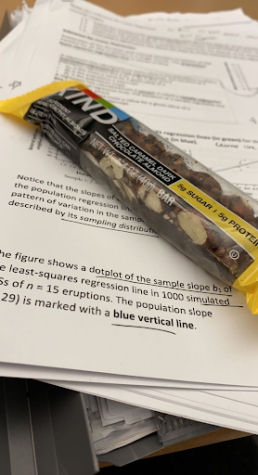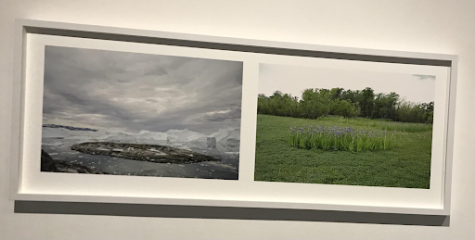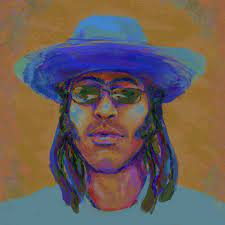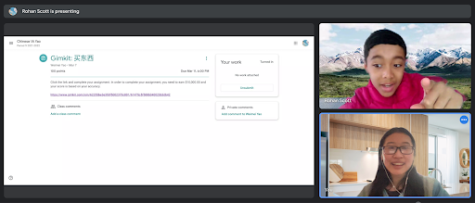Heartstopper and the Impact of Queer Media
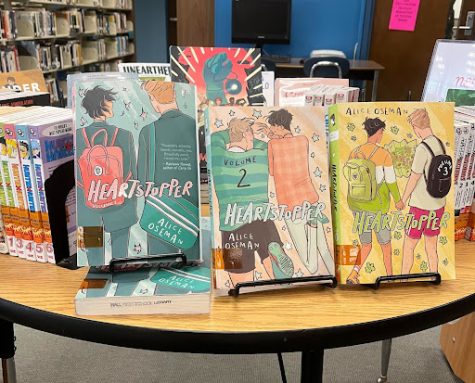
If you’ve been anywhere on social media over the last few months, you may have noticed people talking about “Heartstopper,” a new show on Netflix which is based on a series of graphic novels by the same name. The show is a typical coming-of-age love story but sets itself apart by placing the spotlight on queer stories that are often not told in such a genre.
The story follows Charlie Spring (played by Joe Locke), a 15 year old dealing with being outed to his school the previous year. He is developing a crush on the school “Rugby King,” Nick Nelson (played by Kit Connor). As the season progresses, the two navigate falling in love, figuring out their identities, and telling their friends.
For a lot of queer kids, “Heartstopper” represents the first time they are seeing stories that reflect their own lives. While media featuring queer people isn’t new, a large majority of it suffers from harmful stereotypes or tropes that can feel alienating to queer kids looking for characters to whom they can relate.
Even in stories that are about queer people, most of them are centred on the struggles of being queer. “Heartstopper,” while still touching on topics of homophobia and bullying, manages to keep the tone largely light. It chooses to focus instead on the joy that can come from both queer friendships and queer relationships.
In one scene, after beginning to question his sexuality, Nick turns to the internet, searching up the “Am I gay?” quiz. While it is portrayed in the show as a tense and important moment, many queer viewers found levity in it since a lot of them had similar experiences in figuring out their sexuality.
Another of the moments that many fans of the show praised came at the end of the season when Nick comes out to his mom (played by Olivia Coleman) as bisexual. As she hugs him, she tells him that, “I am sorry if I ever made you feel like you couldn’t tell me that.” It’s one of the most heartfelt moments in the show, perfectly summing up one of the reasons why “Heartstopper” is such an important piece of media.
“Heartstopper” also features a diverse cast of side characters with their own stories to tell. It uplifts characters that are not only queer but also people of color, adding in representation that has been missing from many other shows.
Elle (played by Yasmin Finney), is a black trans woman portrayed by a black trans actress, and even more uniquely, is allowed a happy story. After moving to the girls school, her friends at the boys’ school, although they miss her, express how good it is that she is able to transfer schools and no longer have to deal with the extreme bullying she faced.
Season one also sets up the beginnings of her crush on Tao (played by William Gao), another one of their friends. He’s emphasized as one of the only main characters who is completely straight, combating a lot of misconceptions about dating trans people as being something that makes a person not straight.
The show also contains another side plot featuring Tara (played by Corinna Brown) and her girlfriend Darcy (played by Kizzy Edgell), who befriend Elle at the girls’ school. While both of them are lesbian representation on the screen, something that is often rare in mainstream media, Tara also brings an even less-represented demographic, black lesbians, to the forefront of a show that is receiving critical acclaim. The unique thing is, again, that Tara is allowed a story that is largely happy, and she is proud of her sexuality and her love for her girlfriend, despite some of the conflicts that she does face because of it.
Despite the lighthearted themes of the majority of the show, “Heartstopped” does acknowledge the homophobia and more difficult feelings that many queer youth face.
The show alludes to the fact that Elle faced a lot of bullying before she was able to transfer to the girls’ school. It also mentions she kept getting suspended due to the length of her hair going against the school dress code. There are allusions to the fear that comes with being a part of the community, shown when Nick is initially researching bisexuality, only to be confronted with articles about homophobic attacks and other incidents.
Further, “Heartstopper” discusses how acceptance, or lack thereof, can influence a person. The latter comes to light in the character of Ben Hope (played by Sebastian Croft), who was Charlie’s first relationship after he was outed the previous school year.
The relationship is one that is in stark contrast to the later relationship between Nick and Charlie as Ben only talks to Charlie in secluded areas, meeting up to kiss and talk between passing periods and then pretending that he doesn’t even know who Charlie is the rest of the time.
It comes to a head early on, when Charlie stops seeing him once he realizes how bad it is for him after seeing Ben kissing a girl. He tells him, “If you’re figuring stuff out, fine. Take your time. I would’ve been there for you.”
Charlie continues \to state that Ben never cared about his own feelings in the relationship because of his own difficulties with figuring out his sexuality.
The show also doesn’t shy away from expressing homophobia distinctly faced by lesbians. Though she thought she was ready, when Tara goes public on her social media about her relationship with Darcy. she finds herself unprepared for the homophobic backlash and the way that people changed how they viewed her. She is, told she is “too pretty” to be a lesbian, or that her sexuality is a waste. However, she is secure in her identity and is able to have an important conversation that solidifies her resolve in dealing with the harsh words, as well as her relationship.
The impact of “Heartstopper” lies in the ways that it deals with the topics presented in the show. For such a short run time, it received acclaim from both critics and fans, many of whom cite it as a piece of media that they wish they had had when they were younger.
Fortunately for those who will come after them, though, “Heartstopper” opens the door to mainstream media for stories featuring unapologetic diversity and lighthearted queer joy.

